Click on an image for detailed information
Click on a column heading to sort in ascending or descending order

My
List |
Addition Date
|
Target
|
Mission
|
Instrument
|
Size
|

|
1996-01-29 |
Io
|
Voyager
|
|
1160x1160x3 |
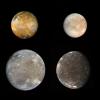
|
-
PIA00012:
-
Galilean Satellites
Full Resolution:
TIFF
(2.14 MB)
JPEG
(74.25 kB)
|

|
1996-08-29 |
Earth
|
Voyager
|
|
565x790x3 |

|
-
PIA00013:
-
Crescent Earth and Moon
Full Resolution:
TIFF
(49.07 kB)
JPEG
(9.171 kB)
|

|
1996-01-29 |
Saturn
|
Voyager
|
|
971x855x3 |
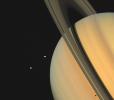
|
-
PIA00024:
-
Saturn With Tethys and Dione
Full Resolution:
TIFF
(1.595 MB)
JPEG
(42.22 kB)
|

|
1996-01-29 |
Oberon
|
Voyager
|
|
500x500x3 |
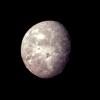
|
-
PIA00034:
-
Oberon at Voyager Closest Approach
Full Resolution:
TIFF
(232.1 kB)
JPEG
(14.1 kB)
|

|
1996-01-29 |
Miranda
|
Voyager
|
|
764x785x1 |

|
-
PIA00038:
-
Miranda - 'Chevron' Grooves
Full Resolution:
TIFF
(376.2 kB)
JPEG
(73.58 kB)
|

|
1996-08-01 |
Miranda
|
Voyager
|
|
2500x2200x1 |
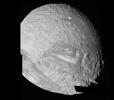
|
-
PIA00043:
-
Miranda - High Resolution Mosaic
Full Resolution:
TIFF
(2.831 MB)
JPEG
(294.4 kB)
|

|
1996-09-19 |
Mercury
|
Mariner Venus Mercury (Mariner 10)
|
|
9999x4000x1 |
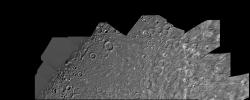
|
-
PIA00066:
-
Mercury: Photomosaic of the Shakespeare Quadrangle (Northern Half) H-3
Full Resolution:
TIFF
(22.21 MB)
JPEG
(3.949 MB)
|

|
1996-09-23 |
Mercury
|
Mariner Venus Mercury (Mariner 10)
|
|
9999x4000x1 |
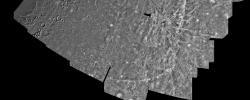
|
-
PIA00067:
-
Mercury: Photomosaic of the Shakespeare Quadrangle of Mercury (Southern Half) H-3
Full Resolution:
TIFF
(23.99 MB)
JPEG
(3.867 MB)
|

|
1998-06-04 |
Triton
|
Voyager
|
|
4500x3500x3 |
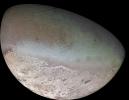
|
-
PIA00317:
-
Global Color Mosaic of Triton
Full Resolution:
TIFF
(29.1 MB)
JPEG
(2.06 MB)
|

|
1998-06-04 |
Io
|
Voyager
|
|
2572x1286x3 |
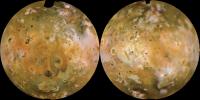
|
-
PIA00318:
-
Io Shown in Lambertian Equal Area Projection and in Approximately Natural Color
Full Resolution:
TIFF
(8.241 MB)
JPEG
(259.1 kB)
|

|
1998-06-04 |
Io
|
Voyager
|
|
2625x1840x3 |
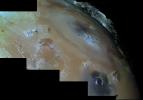
|
-
PIA00323:
-
Eruption of Pele
Full Resolution:
TIFF
(8.268 MB)
JPEG
(268 kB)
|

|
1998-06-04 |
Triton
|
Voyager
|
|
3000x3000x3 |
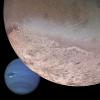
|
-
PIA00340:
-
Montage of Neptune and Triton
Full Resolution:
TIFF
(20.19 MB)
JPEG
(1.243 MB)
|

|
1998-06-04 |
Saturn
|
Voyager
|
|
860x1230x3 |

|
-
PIA00349:
-
Saturn and 4 Icy Moons, Enhanced Color
Full Resolution:
TIFF
(1.15 MB)
JPEG
(48.46 kB)
|

|
1998-06-08 |
Saturn
|
Voyager
|
|
860x1230x3 |

|
-
PIA00400:
-
Saturn and 4 Icy Moons in Natural Color
Full Resolution:
TIFF
(1.061 MB)
JPEG
(47.25 kB)
|

|
1998-06-08 |
Moon
|
Galileo
|
|
3053x3053x3 |
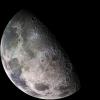
|
-
PIA00404:
-
Moon - North Polar Mosaic, Color
Full Resolution:
TIFF
(13.03 MB)
JPEG
(713.7 kB)
|

|
1998-06-08 |
Moon
|
Galileo
|
|
1986x1986x3 |
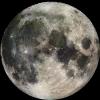
|
-
PIA00405:
-
Earth's Moon
Full Resolution:
TIFF
(8.683 MB)
JPEG
(403.3 kB)
|

|
1996-11-27 |
Toutatis
|
|
|
4096x3072x3 |
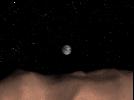
|
-
PIA00515:
-
Computer Generated View of Earth as seen from the Asteroid Toutatis
Full Resolution:
TIFF
(4.795 MB)
JPEG
(307.3 kB)
|

|
1997-12-16 |
Ganymede
|
Galileo
|
|
2667x2000x3 |
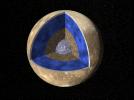
|
-
PIA00519:
-
Ganymede G1 & G2 Encounters - Interior of Ganymede
Full Resolution:
TIFF
(5.694 MB)
JPEG
(624.6 kB)
|

|
1997-01-15 |
|
|
|
1930x2440x3 |

|
-
PIA00545:
-
Solar System Montage
Full Resolution:
TIFF
(9.644 MB)
JPEG
(250.5 kB)
|

|
1997-10-23 |
Earth
|
Cassini-Huygens
|
|
1520x2280x3 |

|
-
PIA00747:
-
Cassini Orbiter and Huygens Probe aboard the Titan IV
Full Resolution:
TIFF
(8.635 MB)
JPEG
(493.9 kB)
|

|
1997-10-23 |
Earth
|
Cassini-Huygens
|
|
1536x2304x3 |

|
-
PIA00748:
-
Launch of Cassini Orbiter and Huygens Probe on Titan IV
Full Resolution:
TIFF
(7.255 MB)
JPEG
(285.3 kB)
|

|
1997-10-23 |
Earth
|
Cassini-Huygens
|
|
2280x1800x3 |
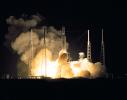
|
-
PIA00749:
-
Launch of Cassini Orbiter and Huygens Probe on Titan IV
Full Resolution:
TIFF
(9.054 MB)
JPEG
(483.3 kB)
|

|
1997-10-23 |
Earth
|
Cassini-Huygens
|
|
1901x2850x3 |

|
-
PIA01050:
-
Launch of Cassini Orbiter and Huygens Probe on Titan IV
Full Resolution:
TIFF
(10.63 MB)
JPEG
(504.5 kB)
|

|
1997-10-23 |
Earth
|
Cassini-Huygens
|
|
1800x2280x3 |

|
-
PIA01051:
-
Launch of Cassini Orbiter and Huygens Probe on Titan IV
Full Resolution:
TIFF
(6.213 MB)
JPEG
(300.9 kB)
|

|
1999-05-03 |
|
|
|
2000x2445x3 |

|
-
PIA01341:
-
Solar System Montage (Updated)
Full Resolution:
TIFF
(4.618 MB)
JPEG
(206.1 kB)
|

|
1998-10-21 |
Callisto
|
Galileo
|
|
2220x1700x3 |
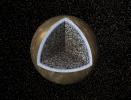
|
-
PIA01478:
-
Callisto Cutaway with Ocean (Artist's Concept)
Full Resolution:
TIFF
(5.246 MB)
JPEG
(490.9 kB)
|

|
1998-10-30 |
Jupiter
|
Voyager
|
|
2081x1654x3 |
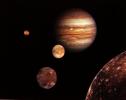
|
-
PIA01481:
-
Jupiter System Montage
Full Resolution:
TIFF
(4.652 MB)
JPEG
(148.9 kB)
|

|
1998-11-02 |
Io
|
Voyager
|
|
1573x1738x3 |

|
-
PIA01485:
-
South Polar Region of Io
Full Resolution:
TIFF
(8.229 MB)
JPEG
(257.5 kB)
|

|
1998-10-30 |
Miranda
|
Voyager
|
|
1581x1600x1 |

|
-
PIA01490:
-
South Polar View of Miranda
Full Resolution:
TIFF
(955.1 kB)
JPEG
(160.1 kB)
|

|
1998-10-30 |
Neptune
|
Voyager
|
|
2073x2678x3 |

|
-
PIA01491:
-
Neptune and Triton
Full Resolution:
TIFF
(3.424 MB)
JPEG
(287.1 kB)
|

|
1999-05-08 |
Titan
|
Voyager
|
|
1296x960x3 |
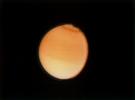
|
-
PIA01532:
-
Titan's Cloud Systems
Full Resolution:
TIFF
(1.339 MB)
JPEG
(38.87 kB)
|

|
1999-05-08 |
Titan
|
Voyager
|
|
1715x1825x3 |

|
-
PIA01533:
-
Titan Haze
Full Resolution:
TIFF
(7.91 MB)
JPEG
(172.2 kB)
|

|
1998-07-02 |
Io
|
Galileo
|
|
800x800x1 |
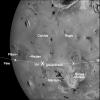
|
-
PIA01605:
-
Io imaging during Galileo's 24th orbit
Full Resolution:
TIFF
(512 kB)
JPEG
(91.06 kB)
|

|
1998-10-13 |
Callisto
|
Galileo
|
|
800x799x1 |
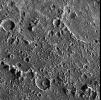
|
-
PIA01629:
-
Textured Terrain in Callisto's Asgard Basin
Full Resolution:
TIFF
(600.1 kB)
JPEG
(189.1 kB)
|

|
1999-04-15 |
Earth
|
Spaceborne Imaging Radar-C/X-Band Synthetic Aperture Radar
|
|
4000x2850x3 |
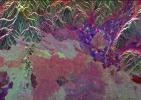
|
-
PIA01819:
-
Space Radar Image of Craters of the Moon, Idaho
Full Resolution:
TIFF
(42.98 MB)
JPEG
(3.466 MB)
|

|
2000-01-19 |
Mercury
|
Mariner Venus Mercury (Mariner 10)
|
|
7200x5000x1 |
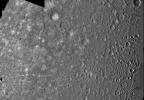
|
-
PIA02236:
-
Mercury: Photomosaic of the Kuiper Quadrangle H-6
Full Resolution:
TIFF
(34.03 MB)
JPEG
(5.16 MB)
|

|
2000-01-26 |
Mercury
|
Mariner Venus Mercury (Mariner 10)
|
|
7200x5000x1 |
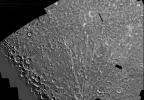
|
-
PIA02237:
-
Mercury: Photomosaic of the Michelangelo Quadrangle H-12
Full Resolution:
TIFF
(33.55 MB)
JPEG
(6.082 MB)
|

|
2000-04-01 |
Mercury
|
Mariner Venus Mercury (Mariner 10)
|
|
7200x5000x1 |
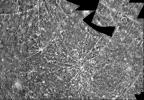
|
-
PIA02255:
-
Mercury: Beethoven Quadrangle, H-7
Full Resolution:
TIFF
(34.98 MB)
JPEG
(7.329 MB)
|

|
1999-10-07 |
Mercury
|
Mariner Venus Mercury (Mariner 10)
|
|
356x311x1 |
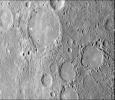
|
-
PIA02407:
-
Mercury's Heavily Cratered Surface
Full Resolution:
TIFF
(122.7 kB)
JPEG
(27.52 kB)
|

|
1999-10-08 |
Mercury
|
Mariner Venus Mercury (Mariner 10)
|
|
356x311x1 |
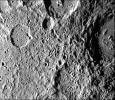
|
-
PIA02408:
-
Mercury's Cratered Terrain
Full Resolution:
TIFF
(132 kB)
JPEG
(39.23 kB)
|

|
1999-10-08 |
Mercury
|
Mariner Venus Mercury (Mariner 10)
|
|
356x311x1 |
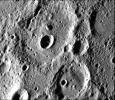
|
-
PIA02409:
-
Fresh Crater in Center of Older Crater Basin
Full Resolution:
TIFF
(122.4 kB)
JPEG
(33.28 kB)
|

|
1999-10-08 |
Mercury
|
Mariner Venus Mercury (Mariner 10)
|
|
356x311x1 |
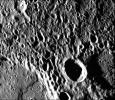
|
-
PIA02410:
-
Mercury's Densely Cratered Surface
Full Resolution:
TIFF
(114.2 kB)
JPEG
(35.76 kB)
|

|
1999-10-08 |
Mercury
|
Mariner Venus Mercury (Mariner 10)
|
|
356x311x1 |
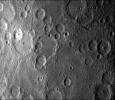
|
-
PIA02411:
-
Kuiper Crater
Full Resolution:
TIFF
(119.4 kB)
JPEG
(24.06 kB)
|

|
1999-10-08 |
Mercury
|
Mariner Venus Mercury (Mariner 10)
|
|
356x311x1 |
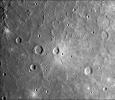
|
-
PIA02412:
-
Uncratered Area on Mercury
Full Resolution:
TIFF
(111.4 kB)
JPEG
(22.98 kB)
|

|
1999-10-07 |
Mercury
|
Mariner Venus Mercury (Mariner 10)
|
|
300x352x1 |

|
-
PIA02413:
-
Hero Rupes Scarp
Full Resolution:
TIFF
(84.82 kB)
JPEG
(25.27 kB)
|

|
1999-10-08 |
Mercury
|
Mariner Venus Mercury (Mariner 10)
|
|
348x302x1 |
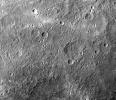
|
-
PIA02414:
-
Similarities to Lunar Highlands
Full Resolution:
TIFF
(103.2 kB)
JPEG
(29.14 kB)
|

|
1999-10-08 |
Mercury
|
Mariner Venus Mercury (Mariner 10)
|
|
335x250x1 |
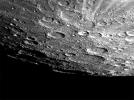
|
-
PIA02415:
-
Mercury's South Pole
Full Resolution:
TIFF
(68.84 kB)
JPEG
(18.31 kB)
|

|
1999-10-07 |
Mercury
|
Mariner Venus Mercury (Mariner 10)
|
|
208x655x1 |

|
-
PIA02416:
-
High Resolution View of Mercury
Full Resolution:
TIFF
(82.71 kB)
JPEG
(29.06 kB)
|

|
1999-10-08 |
Mercury
|
Mariner Venus Mercury (Mariner 10)
|
|
220x700x1 |

|
-
PIA02417:
-
Discovery Rupes Scarp
Full Resolution:
TIFF
(157.3 kB)
JPEG
(33.2 kB)
|

|
1999-10-07 |
Mercury
|
Mariner Venus Mercury (Mariner 10)
|
|
775x1023x1 |

|
-
PIA02418:
-
Outgoing Hemisphere
Full Resolution:
TIFF
(243.7 kB)
JPEG
(87.01 kB)
|

|
2000-01-14 |
Mercury
|
Mariner Venus Mercury (Mariner 10)
|
|
356x311x1 |
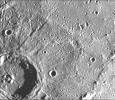
|
-
PIA02419:
-
Interior Peaks and Hilly Floored Crater
Full Resolution:
TIFF
(111.5 kB)
JPEG
(30.81 kB)
|

|
2000-01-14 |
Mercury
|
Mariner Venus Mercury (Mariner 10)
|
|
356x311x1 |
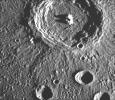
|
-
PIA02420:
-
Terraced Craters
Full Resolution:
TIFF
(110.3 kB)
JPEG
(30.23 kB)
|

|
2000-01-15 |
Mercury
|
Mariner Venus Mercury (Mariner 10)
|
|
356x311x1 |
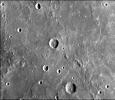
|
-
PIA02421:
-
Hummocky and Smooth Plains
Full Resolution:
TIFF
(94.22 kB)
JPEG
(23.27 kB)
|

|
2000-01-15 |
Mercury
|
Mariner Venus Mercury (Mariner 10)
|
|
356x311x1 |
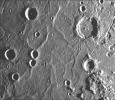
|
-
PIA02422:
-
Ridges and Fractures on Floor of Caloris Basin
Full Resolution:
TIFF
(105.2 kB)
JPEG
(27.98 kB)
|

|
2000-01-14 |
Mercury
|
Mariner Venus Mercury (Mariner 10)
|
|
356x311x1 |
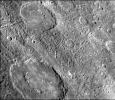
|
-
PIA02423:
-
Crater Chain Groves Inside Larger Craters
Full Resolution:
TIFF
(113.7 kB)
JPEG
(30.62 kB)
|

|
2000-01-15 |
Mercury
|
Mariner Venus Mercury (Mariner 10)
|
|
356x311x1 |
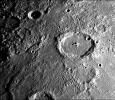
|
-
PIA02424:
-
Large Mercurian Crater
Full Resolution:
TIFF
(125.8 kB)
JPEG
(37.24 kB)
|

|
2000-01-15 |
Mercury
|
Mariner Venus Mercury (Mariner 10)
|
|
356x311x1 |
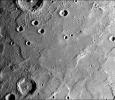
|
-
PIA02425:
-
Young Craters on Smooth Plains
Full Resolution:
TIFF
(117 kB)
JPEG
(28.4 kB)
|

|
2000-01-15 |
Mercury
|
Mariner Venus Mercury (Mariner 10)
|
|
356x311x1 |
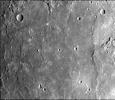
|
-
PIA02426:
-
Lobate Scarps within the Hummocky Plains East of Caloris Basin
Full Resolution:
TIFF
(98.12 kB)
JPEG
(23.91 kB)
|

|
2000-01-14 |
Mercury
|
Mariner Venus Mercury (Mariner 10)
|
|
356x311x1 |
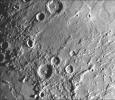
|
-
PIA02427:
-
Northeastern Quadrant of the Caloris Basin
Full Resolution:
TIFF
(113.1 kB)
JPEG
(29.34 kB)
|

|
2000-01-14 |
Mercury
|
Mariner Venus Mercury (Mariner 10)
|
|
356x311x1 |
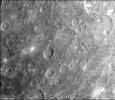
|
-
PIA02428:
-
Lineated Terrain
Full Resolution:
TIFF
(101.8 kB)
JPEG
(24.36 kB)
|

|
2000-01-14 |
Mercury
|
Mariner Venus Mercury (Mariner 10)
|
|
356x311x1 |
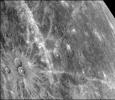
|
-
PIA02429:
-
Prominent Rayed Craters
Full Resolution:
TIFF
(88.45 kB)
JPEG
(21.94 kB)
|

|
2000-01-15 |
Mercury
|
Mariner Venus Mercury (Mariner 10)
|
|
356x311x1 |
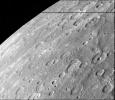
|
-
PIA02430:
-
Antoniadi Ridge
Full Resolution:
TIFF
(104.4 kB)
JPEG
(22.63 kB)
|

|
2000-01-15 |
Mercury
|
Mariner Venus Mercury (Mariner 10)
|
|
356x311x1 |
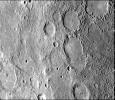
|
-
PIA02431:
-
Curved Lobate Scarp on Crater Floor
Full Resolution:
TIFF
(115.2 kB)
JPEG
(31.98 kB)
|

|
2000-01-15 |
Mercury
|
Mariner Venus Mercury (Mariner 10)
|
|
356x311x1 |
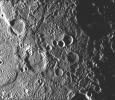
|
-
PIA02432:
-
Crater Rim Offset 10 Kilometers by Scarp
Full Resolution:
TIFF
(102.4 kB)
JPEG
(29.09 kB)
|

|
2000-01-15 |
Mercury
|
Mariner Venus Mercury (Mariner 10)
|
|
356x311x1 |
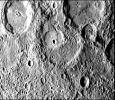
|
-
PIA02433:
-
Scarps Confined to Crater Floors
Full Resolution:
TIFF
(122.9 kB)
JPEG
(40.7 kB)
|

|
2000-01-15 |
Mercury
|
Mariner Venus Mercury (Mariner 10)
|
|
356x311x1 |
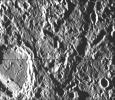
|
-
PIA02434:
-
Crater Rim Offset 10 kilometers by Scarp-High Resolution
Full Resolution:
TIFF
(102.7 kB)
JPEG
(33.59 kB)
|

|
1999-12-07 |
Mercury
|
Mariner Venus Mercury (Mariner 10)
|
|
356x311x1 |
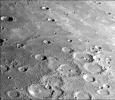
|
-
PIA02438:
-
Heavily Cratered Terrain and Smooth Plain
Full Resolution:
TIFF
(118.4 kB)
JPEG
(25.16 kB)
|

|
1999-12-07 |
Mercury
|
Mariner Venus Mercury (Mariner 10)
|
|
1780x2414x1 |

|
-
PIA02439:
-
Caloris Basin
Full Resolution:
TIFF
(4.033 MB)
JPEG
(822.8 kB)
|

|
1999-12-07 |
Mercury
|
Mariner Venus Mercury (Mariner 10)
|
|
213x275x3 |

|
-
PIA02440:
-
Incoming Hemisphere - Enhanced Color
Full Resolution:
TIFF
(224.1 kB)
JPEG
(15.87 kB)
|

|
1999-12-21 |
Earth
|
Mariner Venus Mercury (Mariner 10)
|
|
922x749x3 |
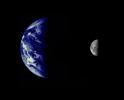
|
-
PIA02441:
-
Earth and Moon as Viewed by Mariner 10
Full Resolution:
TIFF
(388.4 kB)
JPEG
(32.07 kB)
|

|
1999-12-21 |
Moon
|
Mariner Venus Mercury (Mariner 10)
|
|
900x900x1 |
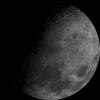
|
-
PIA02442:
-
Moon's North Pole
Full Resolution:
TIFF
(449.8 kB)
JPEG
(101 kB)
|

|
2000-01-18 |
Mercury
|
Mariner Venus Mercury (Mariner 10)
|
|
356x311x1 |
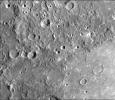
|
-
PIA02443:
-
Smooth Volcanic Plains
Full Resolution:
TIFF
(111.1 kB)
JPEG
(25.89 kB)
|

|
2000-01-18 |
Mercury
|
Mariner Venus Mercury (Mariner 10)
|
|
356x311x1 |
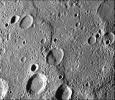
|
-
PIA02444:
-
Intercrater Plains and Heavily Cratered Terrain - First Encounter
Full Resolution:
TIFF
(132.2 kB)
JPEG
(33.46 kB)
|

|
2000-01-18 |
Mercury
|
Mariner Venus Mercury (Mariner 10)
|
|
356x311x1 |
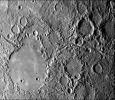
|
-
PIA02445:
-
Hilly and Lineated Terrain
Full Resolution:
TIFF
(132.5 kB)
JPEG
(35.07 kB)
|

|
2000-01-18 |
Mercury
|
Mariner Venus Mercury (Mariner 10)
|
|
450x300x1 |
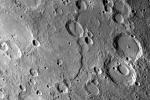
|
-
PIA02446:
-
Discovery Scarp
Full Resolution:
TIFF
(151.6 kB)
JPEG
(32.39 kB)
|

|
2000-01-18 |
Mercury
|
Mariner Venus Mercury (Mariner 10)
|
|
356x311x1 |
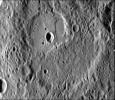
|
-
PIA02447:
-
Scarps Confined to Crater Floors - High Resolution
Full Resolution:
TIFF
(123 kB)
JPEG
(27.34 kB)
|

|
1999-12-17 |
Io
|
Galileo
|
|
688x744x3 |

|
-
PIA02522:
-
Earth-Based Observations of a Fire Fountain on Io
Full Resolution:
TIFF
(58.53 kB)
JPEG
(12.82 kB)
|

|
1999-12-17 |
Io
|
Galileo
|
|
717x653x3 |
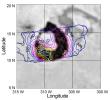
|
-
PIA02524:
-
Galileo PPR Temperature Maps of Loki in October 1999
Full Resolution:
TIFF
(140.3 kB)
JPEG
(61.33 kB)
|

|
2000-08-05 |
Mercury
|
Mariner Venus Mercury (Mariner 10)
|
|
356x311x1 |
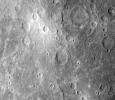
|
-
PIA02936:
-
Double Ring Craters
Full Resolution:
TIFF
(113.5 kB)
JPEG
(22.84 kB)
|

|
2000-08-05 |
Mercury
|
Mariner Venus Mercury (Mariner 10)
|
|
356x311x1 |
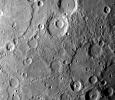
|
-
PIA02937:
-
Heavily Cratered Terrain at South Pole
Full Resolution:
TIFF
(113.5 kB)
JPEG
(30.36 kB)
|

|
2000-08-05 |
Mercury
|
Mariner Venus Mercury (Mariner 10)
|
|
311x356x1 |

|
-
PIA02938:
-
Field of Bright Rays
Full Resolution:
TIFF
(111.9 kB)
JPEG
(27.13 kB)
|

|
2000-08-05 |
Mercury
|
Mariner Venus Mercury (Mariner 10)
|
|
311x356x1 |

|
-
PIA02939:
-
Dark-rimmed Crater and Extensive Ejecta Blanket
Full Resolution:
TIFF
(99.5 kB)
JPEG
(29.08 kB)
|

|
2000-08-05 |
Mercury
|
Mariner Venus Mercury (Mariner 10)
|
|
311x356x1 |

|
-
PIA02940:
-
Densely Cratered Region
Full Resolution:
TIFF
(109.1 kB)
JPEG
(27.48 kB)
|

|
2000-08-05 |
Mercury
|
Mariner Venus Mercury (Mariner 10)
|
|
356x311x1 |
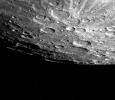
|
-
PIA02941:
-
Mercury's South Pole
Full Resolution:
TIFF
(77.98 kB)
JPEG
(20.02 kB)
|

|
2000-08-05 |
Mercury
|
Mariner Venus Mercury (Mariner 10)
|
|
311x356x1 |

|
-
PIA02942:
-
Large Double-ringed Basin
Full Resolution:
TIFF
(117.7 kB)
JPEG
(34.08 kB)
|

|
2000-08-06 |
Mercury
|
Mariner Venus Mercury (Mariner 10)
|
|
356x311x1 |
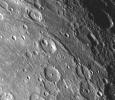
|
-
PIA02943:
-
300 Kilometer Long Scarp
Full Resolution:
TIFF
(113.5 kB)
JPEG
(27.96 kB)
|

|
2000-08-05 |
Mercury
|
Mariner Venus Mercury (Mariner 10)
|
|
311x356x1 |

|
-
PIA02944:
-
Small Craters Peppering South Polar Region
Full Resolution:
TIFF
(96.85 kB)
JPEG
(28.49 kB)
|

|
2000-08-05 |
Mercury
|
Mariner Venus Mercury (Mariner 10)
|
|
311x356x1 |

|
-
PIA02945:
-
South Pole - Ridges, Scarps, Craters
Full Resolution:
TIFF
(104.6 kB)
JPEG
(28.32 kB)
|

|
2000-08-05 |
Mercury
|
Mariner Venus Mercury (Mariner 10)
|
|
311x356x1 |

|
-
PIA02946:
-
Large Circular Basin Flooded and then Cratered
Full Resolution:
TIFF
(63.02 kB)
JPEG
(21.13 kB)
|

|
2000-08-05 |
Mercury
|
Mariner Venus Mercury (Mariner 10)
|
|
356x311x1 |
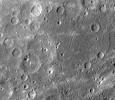
|
-
PIA02947:
-
Intercrater Plains and Heavily Cratered Terrain
Full Resolution:
TIFF
(105.1 kB)
JPEG
(24.31 kB)
|

|
2000-08-05 |
Mercury
|
Mariner Venus Mercury (Mariner 10)
|
|
356x311x1 |
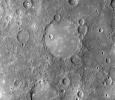
|
-
PIA02948:
-
Old Basin Filled by Smooth Plains
Full Resolution:
TIFF
(103.3 kB)
JPEG
(24.26 kB)
|

|
2000-08-05 |
Mercury
|
Mariner Venus Mercury (Mariner 10)
|
|
356x311x1 |
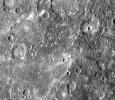
|
-
PIA02949:
-
Small Craters Engulfed by Smooth Plains
Full Resolution:
TIFF
(96.03 kB)
JPEG
(31.69 kB)
|

|
2000-08-24 |
Mercury
|
Mariner Venus Mercury (Mariner 10)
|
|
1000x778x1 |
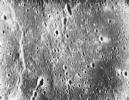
|
-
PIA02961:
-
Mercury at First Encounter Closest Approach
Full Resolution:
TIFF
(917.1 kB)
JPEG
(162 kB)
|

|
2000-08-24 |
Mercury
|
Mariner Venus Mercury (Mariner 10)
|
|
981x792x1 |
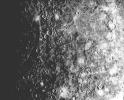
|
-
PIA02962:
-
Large Circular Basin - 1300-km diameter
Full Resolution:
TIFF
(609.1 kB)
JPEG
(154.3 kB)
|

|
2000-11-06 |
|
|
|
4206x3306x3 |
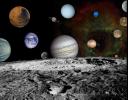
|
-
PIA02973:
-
The New Solar System
Full Resolution:
TIFF
(23.03 MB)
JPEG
(1.479 MB)
|

|
2000-11-04 |
Moon
|
Ranger 7
|
|
685x720x1 |

|
-
PIA02974:
-
Guericke Crater as seen by Ranger 7
Full Resolution:
TIFF
(506.4 kB)
JPEG
(84.03 kB)
|

|
2000-11-04 |
Moon
|
Ranger 7
|
|
720x707x1 |
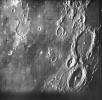
|
-
PIA02975:
-
First Image of the Moon taken by a U.S. Spacecraft
Full Resolution:
TIFF
(547.9 kB)
JPEG
(89.22 kB)
|

|
2000-11-04 |
Moon
|
Surveyor 5
|
|
873x414x1 |
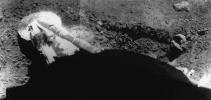
|
-
PIA02978:
-
Surveyor 5 Footpad Resting on the Lunar Soil
Full Resolution:
TIFF
(220.4 kB)
JPEG
(54.29 kB)
|

|
2001-01-11 |
Mercury
|
Mariner Venus Mercury (Mariner 10)
|
|
2743x2086x1 |
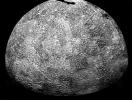
|
-
PIA03101:
-
Mercury's Southern Hemisphere
Full Resolution:
TIFF
(4.839 MB)
JPEG
(1.288 MB)
|

|
2001-01-11 |
Mercury
|
Mariner Venus Mercury (Mariner 10)
|
|
2463x3457x1 |

|
-
PIA03102:
-
Mercury's Caloris Basin
Full Resolution:
TIFF
(7.069 MB)
JPEG
(1.353 MB)
|

















































































































































































































